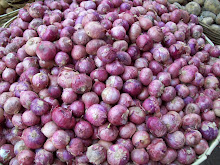
Further book blurb on two Jacqueline Wilson books. I seem to have a slight addiction, meaning I read them before my daughter gets hold of them, and she is too old anyways, if we think of proper age slots. I don't belong to any slot, which means I can freely read them anywhere, anytime, also in public places without feeling embarrassed.
Lola Rose is a Jacqueline Wilson classic. Having read four-five of her novels, I'd recommend
Lola Rose for the beginner. That and the earlier reviewed
The Illustrated Mum rob my points for originality - in the storylines of both novels, there is something spectacular. Play with contingence, class analysis, positionality.
In
Lola Rose, the mother gets to leave an abusive partner by winning a prize in a lottery. It consists of hard core social commentary on schools, the desired addresses, and the less undesirable ones in British everyday life. Lola Rose is registered to a London school where the principal gladly shares a ciggie with the girl's mother. It is the only school in the neighbourhood that accepts new students in the middle of the school year. Lola Rose lives in temporary council housing, which the mother-daughter couple tries to revamp as home. There is a younger boyfriend, whose feelings turn cold after the mother is diagnosed of breast cancer.
I wonder if Jacqueline Wilson's mission is to prepare the youngsters to cope with the realities of everyday life. I have liked her robust narratives, but after reading a few, I start expecting a thematic graduation (which so far doesn't seem to have happened).
The latest novel,
Cookie, is a variation on the theme of
Lola Rose. In both books, women and children are on the run from abusive men, never to return. And both display portraits of late capitalist consumerism, taken to the extremes. In
Cookie,, there is a deeply insecure builder father, who tries to buy friends to the plain-looking daughter by hiring caterers and limos to her birthday party.
Wilson's boys and girls, men and women, are to a great extent cartoon characters, who bring the coarse point home about the ills of society, but after reading some of her books, I start expecting deviations from the bestseller scheme of things. Are the power relations in families really so polarized as Wilson likes to show us? And what about multicultural families, queer families, single parent families in which the parent is not interested in new girl- or boyfriends?
I am expecting from Wilson in the coming novels a widening of themes. The kids cannot forever be reading Thelma and Louise type of runaway dramas. She is a realistic writer and needs to study further the complexity of today's families. Many couples don't split up because of the other's abusive narcissism, or infidelity. She offers us a study of families on the move, but the study doesn't extend far enough. I would also like to read about polite, nice families breaking up.
People eating tofu, drinking soya milk and contemplating treks in the Himalayas do it, too.



